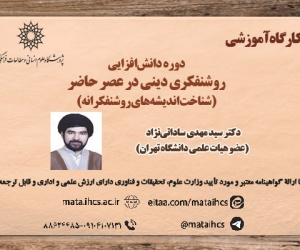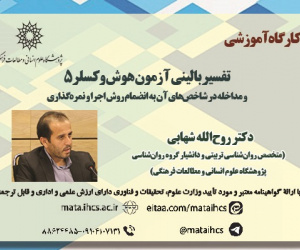تحلیل بازآفرینی بافت های ناکارآمد شهری با بهره گیری از فناوری سنجش ازدور و آینده نگاری، مطالعه موردی: شهر سنندج (مقاله علمی وزارت علوم)
درجه علمی: نشریه علمی (وزارت علوم)
آرشیو
چکیده
بافت های ناکارآمد شهری جزئی از بافت شهرها هستند که به دلیل فرسودگی رو به تزاید، از صفحه حیات اقتصادی شهر به دورمانده اند و در دهه اخیر به دلیل افزایش شهرنشینی شاهد شدت یافتن تغییر فضایی- کالبدی شهرها و متعاقباً ناکارآمدی بافت شهرها بوده ایم. در این راستا برنامه ریزان شهری سعی در ارائه راه حل هایی ازجمله بازآفرینی به عنوان پذیرفته ترین آن، بودند. در این راستا تحقیق حاضر باهدف بازآفرینی بافت های ناکارآمد، سعی داشته است ضمن ارائه روش جدید شناسایی بافت های ناکارآمد شهری، با رویکرد آینده نگاری وضعیت موجود بازآفرینی را مشخص و سپس چشم اندازهای محتمل بازآفرینی بافت های ناکارآمد جهت اتخاذ سیاست های مطلوب را تعیین کند. در این راستا نتایج تحقیق نشان داده است که بافت های تاریخی به دور هسته اولیه شهر تنیده شده و محلات (چهارباغ، آغه زمان، قلعه چهارلان، قطارچیان، میان قلعه، سرتپوله) را در برگرفته شده، که نمودار ناکارآمدترین بخش شهر بوده؛ و سیاست های بازآفرینی این محدوده ها بنا بر یافته های حاصل از میک مک الگوی ناپایدار بوده، و محتمل ترین آینده این بافت ها، وضعیت های نامطلوب به شرح زیر را نشان داده اند؛ مداخلات بولدوزری به بهایی نابودی هویت بافت، بدون دست یابی به دست آوردهای مطلوب برای ساکنان انجام شده است؛ چراکه آلودگی، رواناب ها و فاضلاب ها مدیریت و کنترل نشده و امنیت و آسایش به طور کامل تأمین نشده؛ درنتیجه شاهد مهاجرت ساکنان و متروکه شدن بافت بوده ایم.Analyzing the regeneration of inefficient urban textures using remote Sensing technology and foresight: the case study of Sanandaj city
Inefficient urban textures are part of the texture of cities that have stayed away from the economic life of the city because of the increase from exhaustion. In the last decade, we have seen an increase in Spatial -physical change in the cities and, after this, the inefficiency of the urban textures due to increasing urbanization. In order to tackle urban issues, planners have considered different solutions, with regeneration being the most widely accepted one. In this regard, the present research has been done with the aim of regeneration of inefficient urban textures and has tried to determine the current state of regeneration with a forward - looking approach in addition to presenting a new method for identifying inefficient urban textures and then determining possible perspectives in the regeneration of inefficient urban textures to get favorable policies. The study results have shown that the core of the city has historical textures that include neighborhoods such as Chahar bagh, Agha zaman, Chaharlan Qaleh, Ghatar chian, Mian Qaleh, and Sartpola. These areas were found to be the most inefficient part of the city and an example of unstable regeneration policies. The findings of Mic Mac show unfavorable conditions for the future of these areas, as bulldozer interventions have been carried out, destroying their texture identity without achieving the desired results for residents. It does not manage and control pollution, runoff, and sewage and does not completely provide security and comfort. As a result, we have witnessed the migration of residents and texture abandonment.







